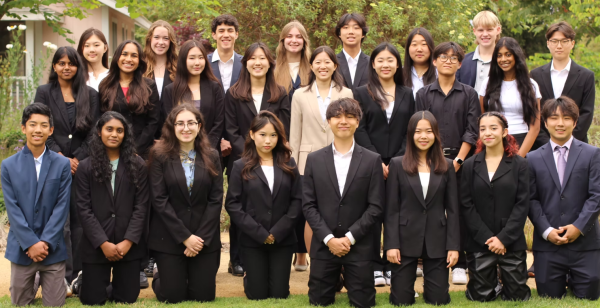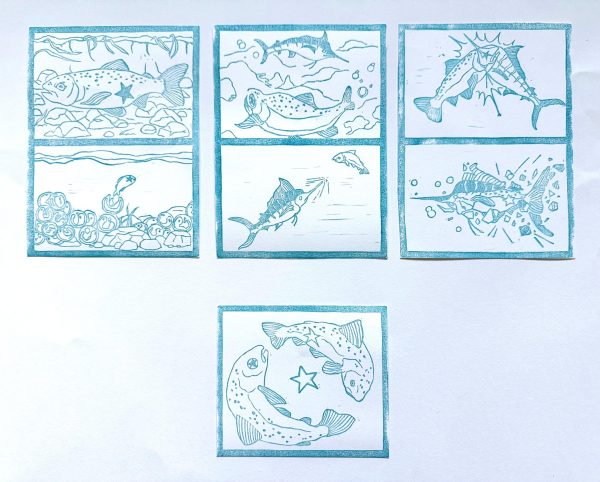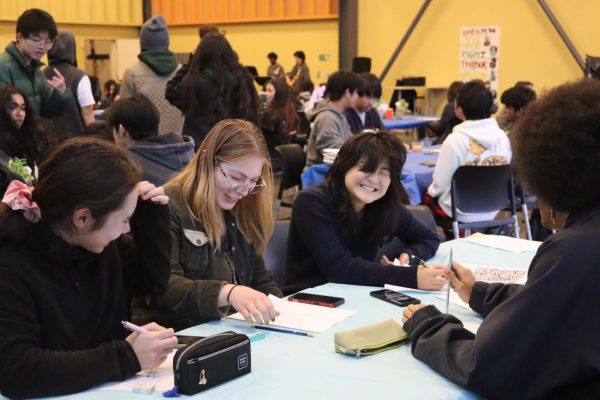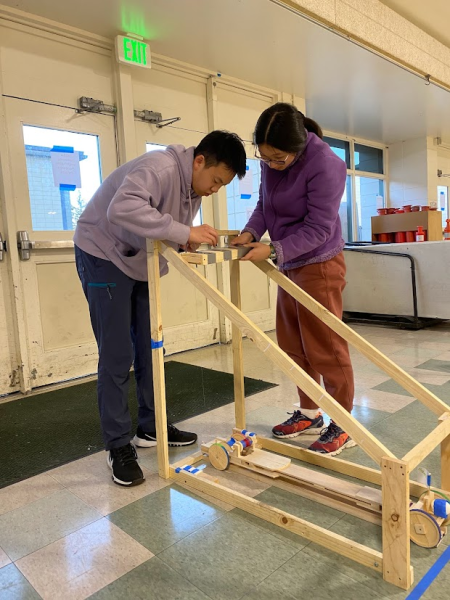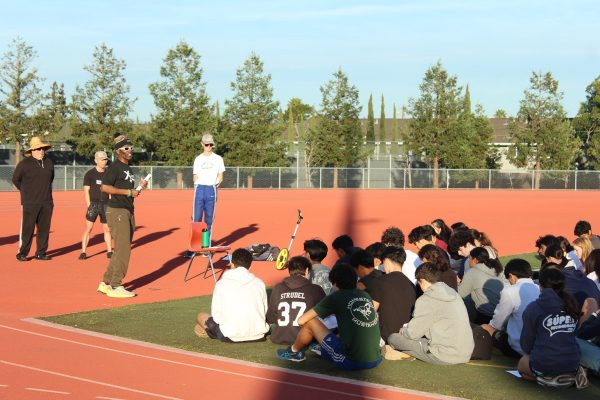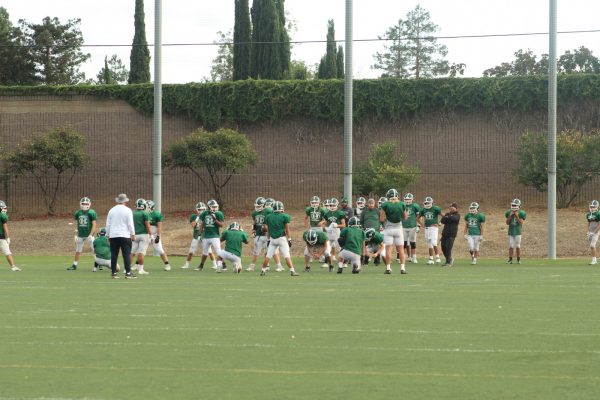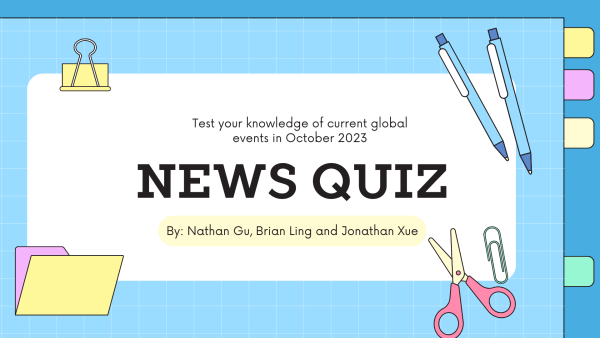Students wrap up AP season with final projects
AP science classes work on projects to further their interests
With AP tests ending on May 19, many AP science classes across campus are finishing off the rest of the year with a final project, junior Michelle Kuan said. These projects are meant to allow students to explore topics that interest them after the AP test, chemistry teacher Samuel Fung said.
“The goal for the project is for students to learn more about the [chemical compounds we use in everyday life],” Fung said. “I want them to understand the chemistry behind these items so they can apply this knowledge later.”

All physics classes must build a contraption, with AP physics 1 creating a circuit, sophomore Kevin Chang said.
Despite the physics teachers assigning the same final project each year, the task was made easier for students this year by changing the quality of materials due to the extra flexibility this tape gives students.
“You have an instance where [when you open the card, something pops out and the card lights], and the second requirement is that two light bulbs light up,” Chang said. “This year, Mrs. Shreve mentioned that we’re not going to have not the copper tape from last year. We have a new type of conductive tape that’s conductive on both sides, which is really good.”
With the project becoming easier for AP physics 1 students, Chang said that learning the electricity and magnetism unit after the AP test is enjoyable for him since he gets to explore a new physics concept.
On the other hand, AP physics C students must demonstrate a topic learned from the past year rather than delving into a new topic, Kuan said
Kuan said the goal of the project is for students to teach a physics concept and her group chose a tensegrity table, a contraption that resembles the impossible bench, to demonstrate equilibrium.
The project is an opportunity for students to focus on topics they are passionate about, Kuan said.
Since tensegrity benches intrigued her group, Kuan said they all thought about the physics behind the phenomenon, which ended up with their group choosing to demonstrate equilibrium.
Kuan also said she looks forward to seeing the other contraptions that other groups created to see their ideas.
Similar to Kuan, AP biology student, junior Kazuki Iimura said his final project is a research project on any aspect of biology that students wish to learn more about, especially looking forward to the mechanism behind the topics.
“My project is about the importance of the number of nuclei in relation to muscle memory and growth,” Iimura said. “We chose it because it seemed pretty interesting, and muscle memory is something you don’t really think about.”
Unlike the assignments from the AP physics classes, Iimura said the AP biology project requires the application of nearly all previously learned topics.
When creating these projects, students must incorporate creativity to produce a novel product, Kuan said.
When coming up with ideas, however, Chang said creating a unique project proves difficult since it requires a novel idea and recommends looking for inspiration elsewhere.
“I’m probably just gonna go on YouTube and find something that looks interesting,” Chang said. “Then copy it and then steal from multiple sources and make it my own, because that’s what creativity is.”
Nathan is a senior and sports editor for The Epitaph. In his second year, he hopes to tell stories highlighting the HHS community. Nathan enjoys playing...



